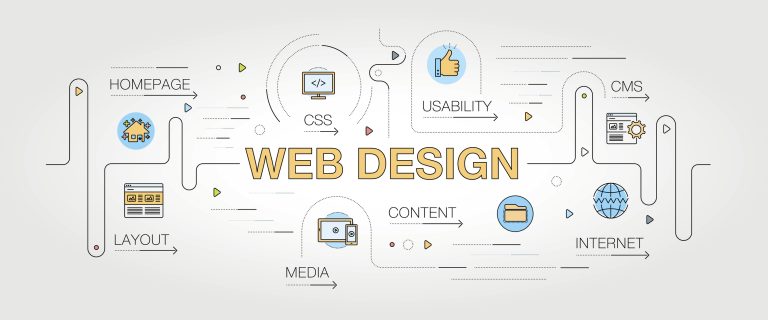The SEO Benefits of Responsive Web Design
Responsive Web Design (RWD) significantly enhances SEO by improving user experience across devices, lowering bounce rates and increasing site visits. It offers faster page load times, which is crucial for user satisfaction and SEO. RWD boosts mobile search rankings in line with Google’s mobile-first indexing and leads to higher conversion rates due to its ease of use across all devices. It simplifies website maintenance by managing a single site, encouraging social sharing, and reducing duplicate content, thereby maintaining the site’s integrity in search engine rankings. Additionally, RWD consolidates backlinks, enhancing site authority, and offers local SEO advantages by making sites more accessible on mobile, which is vital for local searches. This unified approach aligns with providing authoritative content and improves online presence by meeting search engine standards and user expectations.
Nowadays, the importance of a responsive web design (RWD) cannot be overstated. As professionals in the field, we’ve observed firsthand how adapting to the fluid landscape of device diversity can significantly uplift a website’s SEO performance. Through a blend of technical agility and strategic foresight, responsive web design is pivotal in bolstering a site’s visibility and engagement. Delving into the nuances, we’ll explore the top 10 SEO benefits that responsive web design brings to the table, drawing from our extensive experience and the latest industry insights to unveil how this approach enhances user interaction and acts as a cornerstone for digital marketing success.

1. Enhanced User Experience Across Devices
One of the core advantages of responsive website design is the seamless user experience it offers across various devices. This adaptability reduces bounce rates and encourages longer site visits, signalling that your website provides valuable content to search engines, thereby improving your rankings. By ensuring content fluidity and navigational ease, RWD creates an intuitive user interface that resonates with users’ expectations, fostering a positive perception and increasing the likelihood of return visits.
2. Faster Page Load Times
Speed is critical to user satisfaction and SEO rankings. Responsive websites are optimised for speed across all devices, ensuring quick loading times that keep users engaged and reduce bounce rates. This optimisation is achieved through techniques such as image compression, responsive image display, and prioritising above-the-fold content, collectively contributing to a smoother, more efficient user experience.

3. Lower Bounce Rates
Responsive design keeps users on your site longer by adapting to their device for optimal viewing, which, in turn, positively impacts your SEO as search engines interpret longer engagement as a sign of content relevance and quality. By minimising navigation issues and improving content accessibility, RWD encourages users to explore more of your site, thus reducing the chances of premature departure.
4. Boosted Mobile Search Ranking
With Google’s mobile-first indexing, the mobile version of your site now plays a pivotal role in your search rankings. A responsive design ensures your site is mobile-friendly, thus enhancing its visibility in search results. This alignment with Google’s indexing priorities underscores the necessity of mobile optimisation in achieving and maintaining a competitive edge in search engine rankings.

5. Higher Conversion Rates
A responsive website simplifies the path to conversion on any device. This ease of use can significantly increase your conversion rates, directly impacting your bottom line. By removing barriers to action, such as cumbersome navigation or unreadable content, RWD paves the way for smoother transitions from interest to action, boosting the effectiveness of calls-to-action and other conversion-oriented elements.
6. Simplified Website Maintenance
Managing one responsive site is far more efficient than updating separate versions for mobile and desktop. This unified approach saves time and ensures consistency in content and user experience. It streamlines the management process, allowing for quicker updates and adjustments, vital for staying relevant and responsive to market trends and user feedback.

7. Improved Social Sharing
Responsive design facilitates easier content sharing across social platforms, extending your reach and increasing your site’s visibility and traffic. By integrating social sharing buttons seamlessly within the design, RWD encourages users to share content effortlessly, thus amplifying your online presence and fostering community engagement.
8. Reduction in Duplicate Content
Having multiple websites for your business is one of the most common SEO mistakes that business owners make. One responsive site helps avoid SEO issues related to duplicate content that can occur when maintaining separate sites for mobile and desktop, ensuring your the integrity of your website in the eyes of Google and other search engines. This approach simplifies content management and bolsters your SEO efforts by concentrating value and relevance in a single, unified site architecture.

9. Stronger Backlink Profile
Backlinks to your site are consolidated with a responsive design, enhancing your site’s authority and improving your search rankings. This consolidation ensures that all inbound links lead to the same domain, thereby maximising link equity and reinforcing your site’s credibility and trustworthiness in search engines and users’ eyes.
10. Local SEO Advantages
Responsive design is especially beneficial for local search, making your site more accessible to mobile users looking for local services, thereby driving traffic and improving visibility in local search results. By optimising for local SEO, responsive sites cater to users’ immediacy and location-specific needs, enhancing the likelihood of attracting targeted, high-intent traffic.

The Undeniable Impact of Responsive Web Design
Our commitment to excellence and staying ahead of the latest trends has shown us the undeniable impact of responsive web design on SEO. By embracing RWD, businesses can improve their online presence and ensure they meet the evolving standards of search engines and user expectations. In our journey, we’ve seen how these practices align with and enhance the principles of providing trustworthy, authoritative, and expert content, especially on topics that impact our readers’ financial stability, well-being, and overall quality of life. Through a blend of innovation, insight, and integrity, responsive web design stands as a testament to our dedication to excellence.
As we navigate the ever-changing landscape of the SEO and website design industry, our focus remains on delivering strategies that meet and exceed the benchmarks for success in digital marketing. The integration of responsive web design into our approach is a testament to our dedication to providing the best possible online experience for users and the highest quality of service to our clients. Reflecting on the transformative power of RWD, we reaffirm our commitment to advancing the standards of digital marketing, ensuring our strategies are not only responsive to the needs of our clients but also to the expectations of users worldwide.
Check out some of our case studies to see the difference that we make to businesses across the UK.

